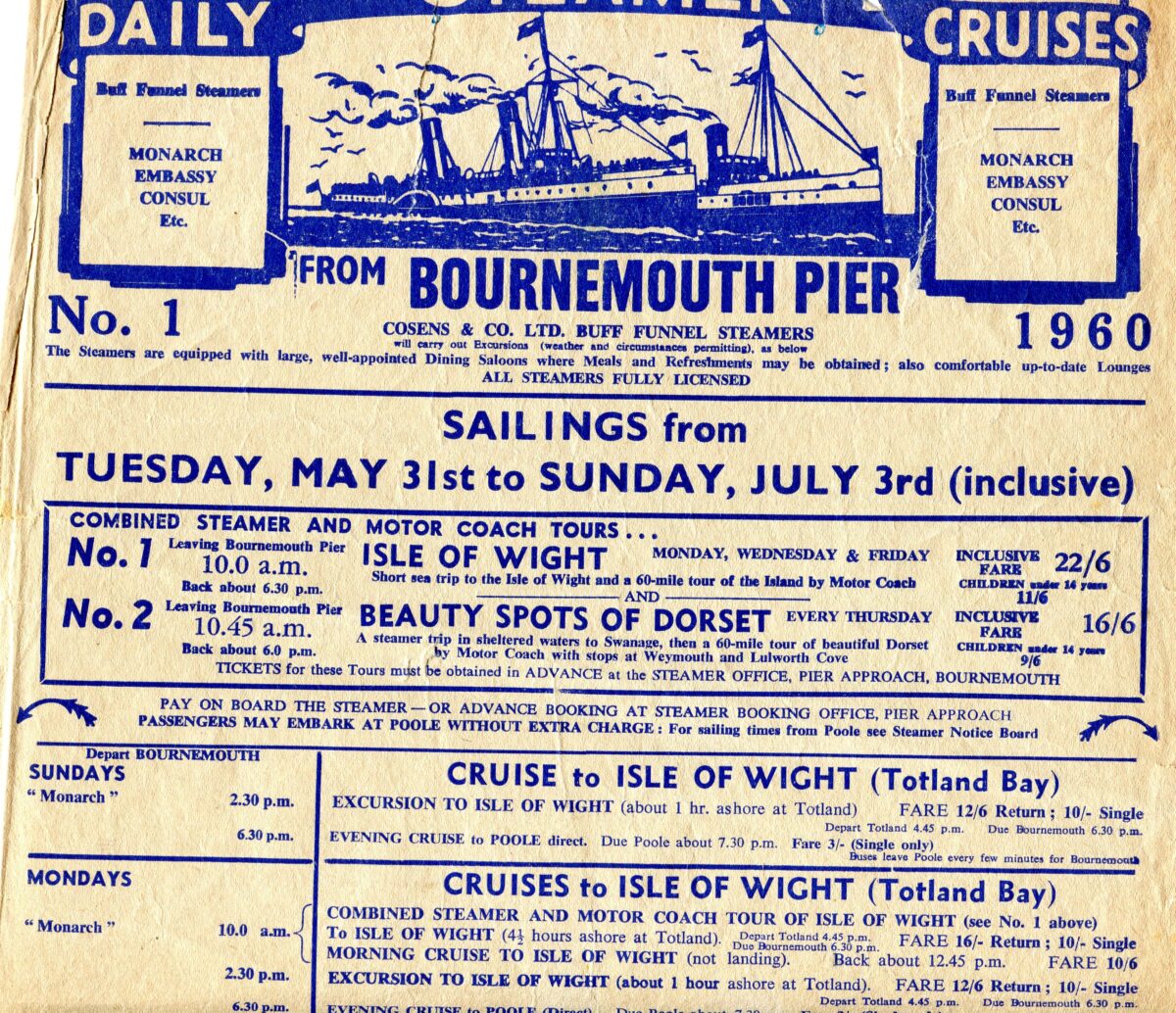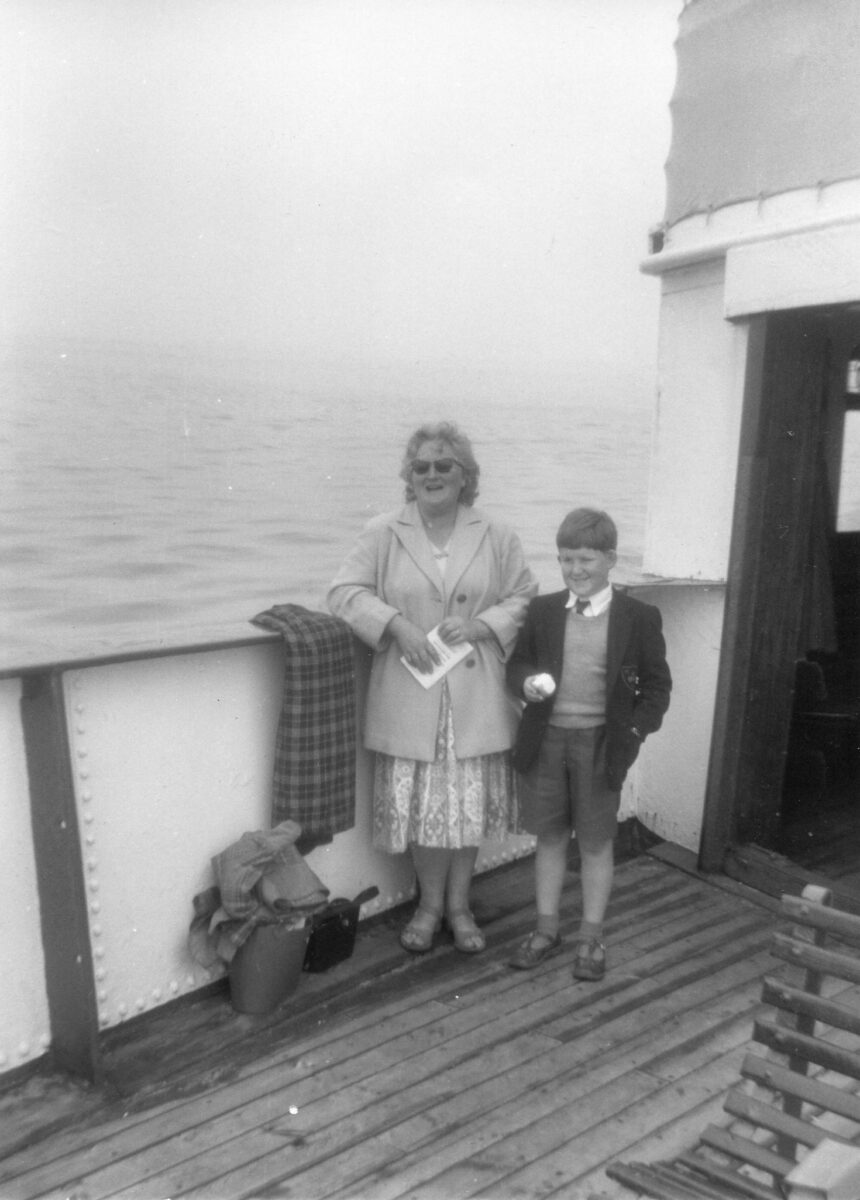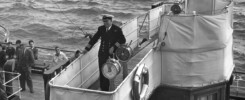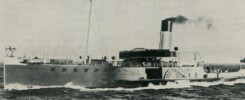
Tuesday 31st May was the first scheduled day of the season for Cosens’s Monarch in 1960 on which she was timetabled to run the Swanage service leaving Bournemouth Pier at 10.45am, 2.30pm and 4.15pm for the forty five minute run across to Swanage with return at 11.30am, 3.15pm and 5pm. Then at 6pm she was due to leave Bournemouth at 6pm for her overnight berth at Poole for arrival at 7.45pm having called at Swanage on the way at 6.45pm

On Wednesday 1st June she was scheduled to leave Poole at 8am for Swanage 9am and then Bournemouth for a 10am departure to Yarmouth Isle of Wight getting back to Bournemouth at 12.45pm. She was off again to Yarmouth at 2,30pm with an hour ashore before retracing her steps to Bournemouth for 6.30pm, Swanage 7.15pm and Poole 8.15pm.
On Thursday 2nd she was rostered for the same timings as on the Swanage service on Tuesday. On Friday 3rd she ran the same schedule to the Isle of Wight as on Wednesday but calling at Totland Bay instead of Yarmouth and not calling at Swanage outward and inward bound in the morning and evening. On Saturday 4th she was back on the Swanage service. On Sunday 5th she was due to leave Poole at 1pm for Bournemouth 2.30pm for an afternoon cruise giving one hour ashore at Totland Bay and returning to Bournemouth at 6.30pm and Poole at 7.30pm. On Monday 6th she was rostered to do a repeat of the Friday double run from Bournemouth to Totland Bay with no calls at Swanage.
On this seven day a week schedule Monarch continued until Saturday 2nd July when Embassy made her first appearance of the season at Bournemouth taking the Swanage service and giving Monarch her first day off. The only exception was Saturday 18th June when Monarch ran a day trip leaving Bournemouth at 9.30am for Portsmouth to welcome “The Royal Honeymoon Couple” (Princess Margaret and Anthony Armstrong Jones) arriving back on the Royal yacht Britannia with return to Bournemouth at 6pm.
From Sunday 3rd July Embassy was rostered for the Isle of Wight sailings six days a week from Sunday to Friday. Monarch was rostered for the Swanage service six days a week from Sunday to Friday, with some early evening crossings to the Isle of Wight in the peak weeks. The Saturday Swanage service was shared between the two with one doing it one Saturday and the other the following week so that they both got one day off every fortnight. That caught me and Dad out. We went up from Weymouth on a July Saturday expecting to find Monarch running under the command of Capt Defrates and instead found Embassy under the command of Capt Haines. More fool us!

Monarch’s last sailings from Bournemouth were on the Swanage service on Thursday 8th September 1960. The following day she steamed back to Weymouth to lay up and was towed away to be scrapped in Ireland in March 1961.
Two tiny points of detail from 1960 for any who care for such trifles:
Tiny Point of Detail 1: Whilst the engine rooms of Cosens’s paddle steamers generally gleamed, the Embassy’s was filthy at this stage in her career with grease and oil everywhere and with a generally uncared for look about it. Her chief engineer, who I won’t name, looked similarly grease laden. 1960 was the first season that I sailed on her with my Dad and I was quite shocked at the state of it particularly having become familiar with Monarch’s which was kept in apple pie order by her then chief engineer Alf Pover. Monarch was sold for scrap after the 1960 season so Alf Pover was transferred to Embassy from 1961. He got out his polishing cloths and transformed her engine room into a gleaming palace. And remember, keeping an engine and engine room clean and tidy is important not just from an aesthetic point of view. A clean engine room is one in which you are more likely to spot issues, defects, cracks and so on and therefore be in a position to do something about them before they become a major issue and fail.
Tiny Point of Detail 2: The brass telegraphs, including their pedestals, on the bridges of Cosens’s paddle steamers were usually polished to a high gleam factor. When Monarch was bought by Cosens from British Railways in 1951 her brass telegraphs were at that time painted brown as was the usual practice with railway owned boats. The labour charges for unnecessary polishing were thought by the railway to be a wasteful use of resources. At least that was their excuse. Once in Cosens’s fleet the tops, handles and around the dials of Monarch’s telegraphs were polished to a high order but the pedestals remained painted brown right up to her end in 1960. Please don’t tell anyone but I rather thought that the highly polished tops over the brown painted pedestals worked rather well and looked quite neat.
Kingswear Castle returned to service in 2023 after the first part of a major rebuild which is designed to set her up for the next 25 years running on the River Dart. The Paddle Steamer Kingswear Castle Trust is now fund raising for the second phase of the rebuild. You can read more about the rebuilds and how you can help if you can here.
John Megoran
This article was first published on 31st May 2021.


